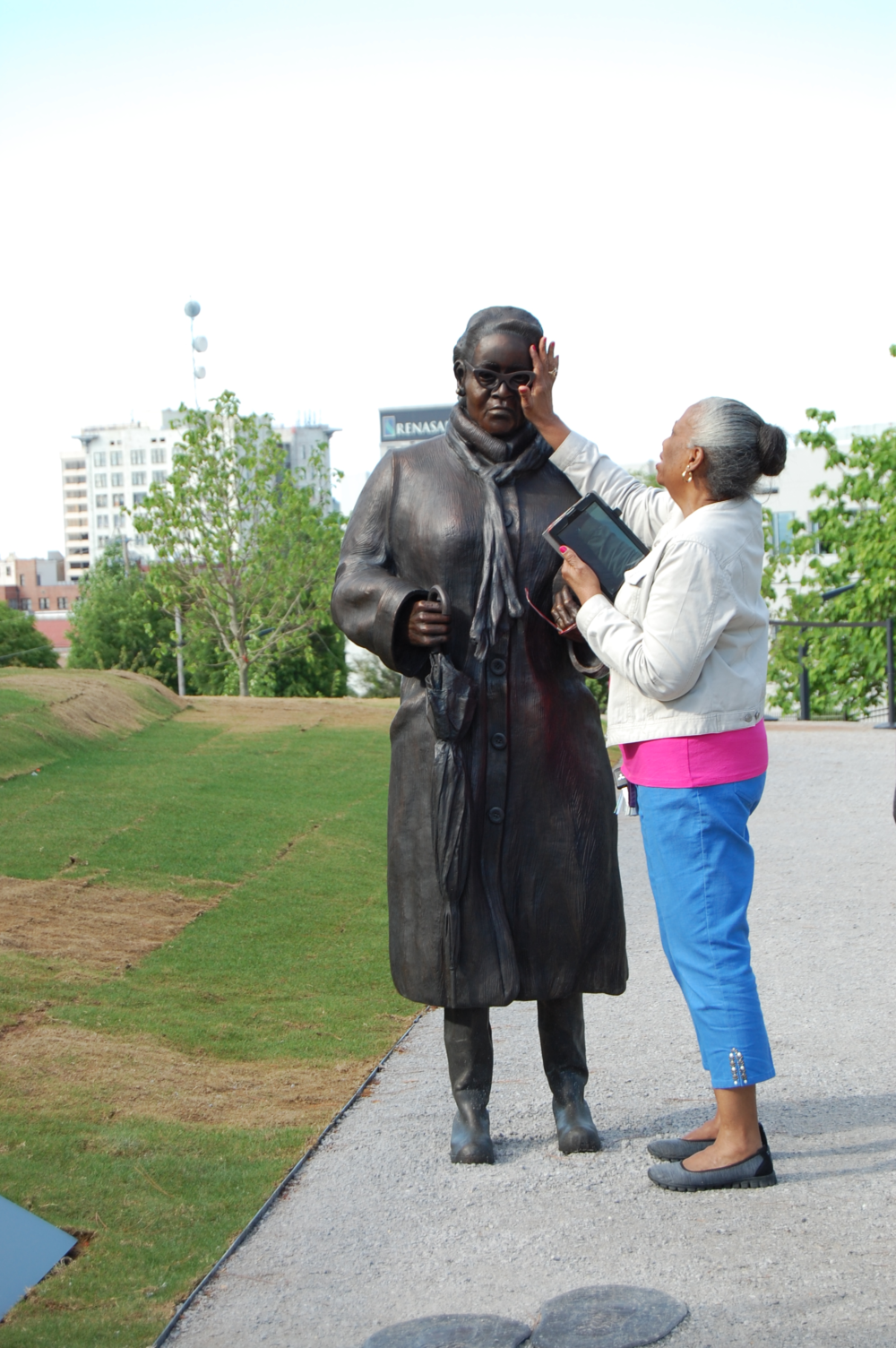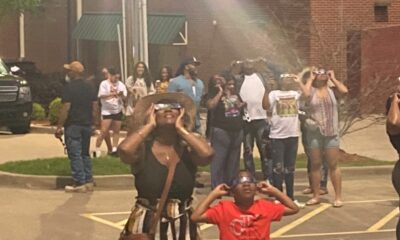Black History
A Bronze Statue at the Lynching Memorial Allows A Daughter One Last Embrace

The campus of the Memorial for Peace and Justice in Montgomery, Alabama, known also as the “Lynching Memorial” features a series of very moving statues. There are sculptural tributes to the enslaved, bound by chains, their faces etched with pain. And, then there is the collection of bronze statues dedicated to the women of the Montgomery Bus Boycott which is often considered the beginning of the Civil Rights Movement. For Gloria Lusear, the women immortalized in bronze hold a special meaning.
“The artist is my first cousin,” says Lusear. “My mom was not a part of the Montgomery bus boycott, but Dana took her artist prerogative, using the images of my mom and great-grandmother. The objective is to depict strong, determined, educated women who persevered through that era and survived.”
Lusear’s cousin, Dana King, is a former Emmy award-winning news anchor, who began her art career as a sculptor after she retired from television news.King told KQED, a San Francisco area television station, that she referenced her family history for the work which had been commissioned by Bryan Stephenson, the Civil Rights attorney and founder of the Memorial for Justice and Peace. She mentioned her aunt, who was Lusear’s mother.
“My family lived in Forrest City during the Civil Rights era,” Lusear explains. “My mother was a teacher and an elementary school principal. Dad was an extension agent. Both were highly respected civic and community leaders…I remember that dead animals were left on the yard, a cross was burned and other threats that were made.”
At the Memorial which opened last spring, hundreds of steel plates hang from the museum ceiling in a display that contextualizes the horrific fate of the thousands of African American men and women lynched. Names, dates, and places have been engraved along with the reasons for the hanging. Many of those killed lost their lives for daring to request recognition of their inherent human dignity.
For the daughter of one of the women who nurtured dreams and dignity through education in a Jim Crow South, the Memorial gifts Lusear with an opportunity to reconnect with her mother.
Months after she attended the opening ceremony for the Memorial, Lusear recalls, “We had gone through the Memorial and walked around the grounds when we came upon the statues. I screamed and cried, and I just hugged her. I could see her once again, not as the statue, but as the mother I love and miss so very much.”

-

 Featured12 months ago
Featured12 months agoArkansas Sheriff Who Approved Netflix Series Says He Stayed ‘In His Lane’
-

 HBCUS12 months ago
HBCUS12 months agoSenator Boozman Delivers $15 Million to Construct New UAPB Nursing Building
-

 News12 months ago
News12 months agoMillions In the Path of The Total Solar Eclipse Witnessed Highly Anticipated Celestial Display
-

 Featured9 months ago
Featured9 months agoCalifornia Is the First State to Create A Public Alert for Missing Black Youth
-

 Featured9 months ago
Featured9 months agoAfrican American Leaders Stay the Course Amid Calls for President Biden To Bow Out of Race
-

 Featured9 months ago
Featured9 months agoThe Debate Fallout Lands on Both Candidates









